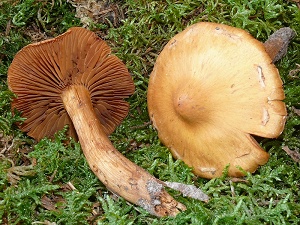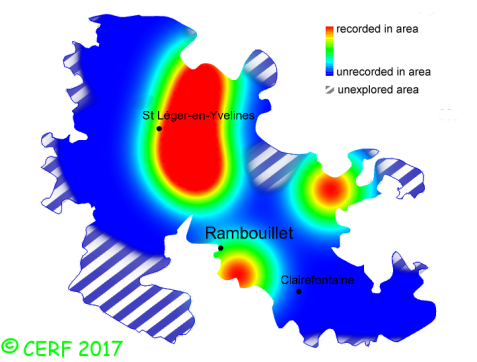| Cortinarius hinnuleus Fr. |
|
|
|
|
|
|
The cap is brownish ochre, convex to campanulate, then expanded, with a central umbo; its margin is smooth. The cap surface is smooth, not viscid nor sticky. The stem is tawny-brown to red brown, paler than the cap, with a clear ring zone (sock pattern). The flesh is white to ochre-brown, unchanging; its taste is faint, mild to slightly bitter; the odour is strong, of wet soil; its texture is fibrous. The gills are violaceous then ochre then brown rusty red, adnate, distant (nb of gills per 90° ~ 11 ). The spore print is rusty brown. This species is mycorrhizal. It grows on the ground, under broad-leaved trees and conifers, in wood edges, on a rather clayey-acid soil, more often on high ground, with spruce, fir, willow, poplar. The fruiting period takes place from July to November.
Chemical tests : flesh reacting brown when in contact with potash. Cortinarius hinnuleus is quite rare and localised in the forest of Rambouillet, and is occasional, more generally speaking . | ||
|
page updated on 14/01/18

